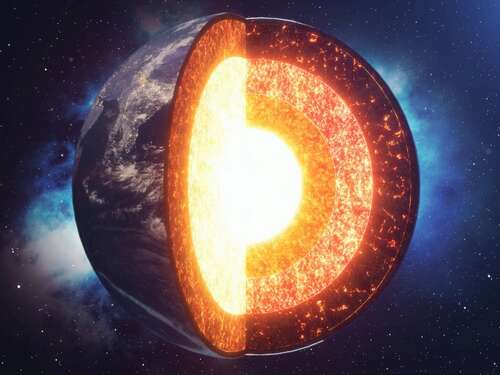
A collision 4.5bn years ago between the Earth and a planet may have left remnants in the Earth’s mantle.
While the circumstances that led to the formation of the moon has been debated by astronomers for decades, the most accepted theory proposes that it was created after an impact between the Earth and another planet roughly the size of Mars.
Now, an international team of scientists believe recently detected anomalies near the Earth’s core are remnants of this collision that is estimated to have taken place 4.5bn years ago.
Published this week in Nature, the study relied on computational fluid dynamics methods pioneered by Prof Deng Hongping of the Shanghai Astronomical Observatory, which is a part of the Chinese Academy of Sciences.
“Previous research had placed excessive emphasis on the structure of the debris disk (the precursor to the Moon) and had overlooked the impact of the giant collision on the early Earth,” said Deng.
The study challenges the traditional notion that the giant impact that resulted in the moon led to the “homogenisation” of the early Earth.
“Instead, the moon-forming giant impact appears to be the origin of the early mantle’s heterogeneity and marks the starting point for the Earth’s geological evolution over the course of 4.5bn years,” Deng explained.
According to the prevailing theory, a Mars-sized planet called Theia collided with primordial Earth, known as Gaia, and the resultant debris eventually became the moon.
Before the availability of modern measurement techniques, it was believed that the moon contains largely Theian material while the Earth is made up of Gaian remnants. However, it was later revealed that the composition of the Earth and moon are remarkably similar.
Previous studies conducted by Deng showed that the lower mantle of the Earth may still be dominated by pre-impact Gaian material, which has a higher silicon composition than the upper mantle. The latest study, therefore, is able to explain the stratification of the Earth’s crust.
“Through precise analysis of a wider range of rock samples, combined with more refined giant impact models and Earth evolution models, we can infer the material composition and orbital dynamics of the primordial Earth, Gaia and Theia,” said Dr Yuan Qian of the California Institute of Technology in Pasadena. “This allows us to constrain the entire history of the formation of the inner solar system.”
Deng added that the research also “provides inspiration” for understanding the formation and habitability of exoplanets beyond our solar system.
10 things you need to know direct to your inbox every weekday. Sign up for the Daily Brief, Silicon Republic’s digest of essential sci-tech news.

